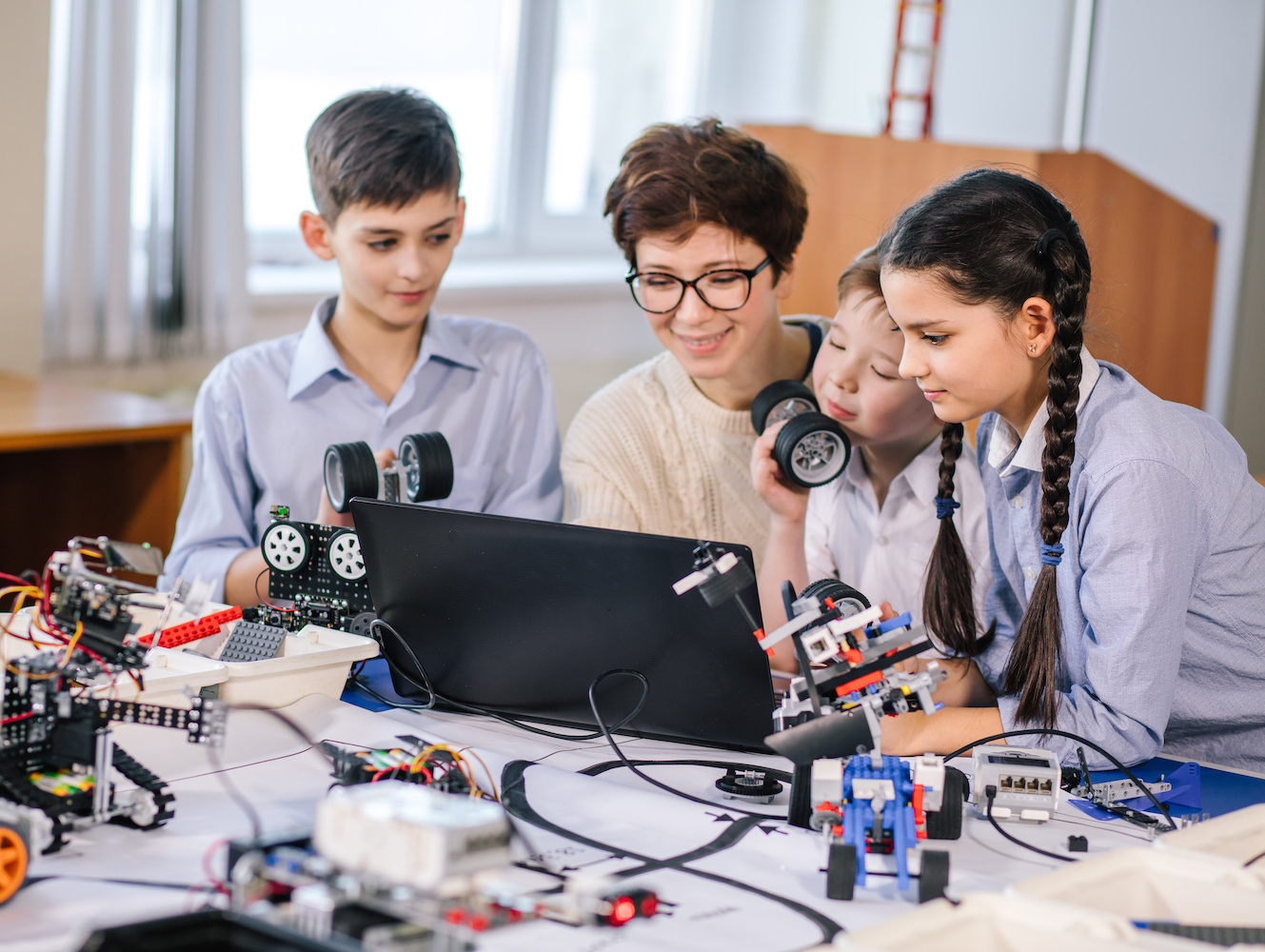In a rapidly advancing world, education has the power to shape the future. One of the most impactful approaches to education is STEM – Science, Technology, Engineering, and Mathematics – a multidisciplinary field that equips students with the skills and mindset necessary to thrive in an ever-evolving landscape. As we delve into the realms of STEM education, we uncover how it empowers students, the challenges it faces, and the strategies that make it effective in preparing students for the future.
1. The Significance of STEM Education:
STEM education represents a holistic approach to learning that mirrors the interconnectedness of the real world. It goes beyond memorization and promotes critical thinking, creativity, and problem-solving. The demand for STEM skills is surging across industries, ranging from healthcare and engineering to data analysis and sustainable energy solutions. STEM education isn’t just about learning facts; it’s about fostering a mindset that enables students to analyze, adapt, and innovate.
2. Benefits of STEM Education for Students:
STEM education empowers students with a plethora of benefits. It enhances critical thinking skills by encouraging students to question, investigate, and seek solutions. Creative thinking flourishes as students tackle complex problems and devise unique approaches. Moreover, STEM education is a springboard to future career opportunities, providing students with skills that are highly sought after in the job market. Through STEM, students develop analytical skills that can be applied to diverse scenarios, whether they’re predicting climate patterns or designing new software.
3. Challenges in STEM Education:
While the potential of STEM education is immense, it faces certain challenges. One significant concern is the gender gap in STEM fields, with females being underrepresented. Additionally, not all educational institutions have the necessary resources to provide robust STEM programs, leaving some students at a disadvantage. These challenges, however, can be addressed through targeted initiatives, community partnerships, and a commitment to diversity and inclusion.
4. Strategies for Effective STEM Education:
Effective STEM education thrives on hands-on learning experiences. By conducting experiments, building prototypes, and engaging in interactive projects, students develop a deeper understanding of concepts. Fostering a growth mindset – the belief that abilities can be developed through dedication and hard work – is essential. Integrating technology into the learning process, such as simulations and virtual labs, keeps students engaged and provides a taste of real-world applications. Collaborative projects instill teamwork and communication skills, preparing students for collaborative work environments.
5. Real-Life Examples of Successful STEM Education:
Examples abound of institutions that have excelled in STEM education. The “Maker Movement,” for instance, encourages students to create tangible objects using technology, enhancing their technical skills while fostering creativity. Furthermore, initiatives like robotics clubs and science fairs allow students to apply their knowledge in practical, exciting ways. These success stories underline the positive impact of hands-on, immersive learning experiences.
6. Tools and Resources for STEM Education:
A myriad of tools and resources are available to educators and students eager to embrace STEM. Online platforms like Khan Academy, Coursera, and edX offer a range of courses spanning different STEM subjects. Websites like NASA’s educational portal provide a wealth of resources for astronomy and space enthusiasts. Additionally, coding platforms like Scratch and Tynker introduce programming concepts to even the youngest learners.
7. Overcoming Common Misconceptions about STEM:
Dispelling myths surrounding STEM is crucial. STEM education isn’t exclusively for prodigies; it’s for anyone curious and willing to learn. Similarly, while STEM concepts can be challenging, they become more manageable with the right guidance and a growth mindset. By addressing these misconceptions, we can encourage a broader audience to embrace STEM education.
8. The Role of Parents and Society:
Parents play a pivotal role in nurturing children’s interest in STEM. Encouragement, exposure to STEM-related activities, and dismantling stereotypes are essential. Society’s perception of STEM also matters – portraying STEM fields as exciting, accessible, and diverse can sway students’ career choices.
9. Building Inclusivity in STEM:
To harness the full potential of STEM education, inclusivity is paramount. Initiatives that target underrepresented groups, such as girls and minorities, are essential for a more diverse STEM community. By showcasing diverse role models and providing mentorship, we can empower students from all backgrounds to pursue their passions in STEM.
10. Looking Ahead: The Future of STEM Education:
The future of STEM education is poised for innovation. Emerging technologies like AI and virtual reality hold the promise of transforming the learning experience. Virtual labs could simulate intricate experiments, while AI-powered tutors might provide personalized guidance. As we move forward, it’s vital to uphold the core values of critical thinking, creativity, and collaboration that underpin effective STEM education.
Conclusion:
STEM education is more than an academic pursuit – it’s a gateway to a brighter future. By fostering critical thinking, problem-solving skills, and creativity, STEM equips students to navigate an increasingly complex world. Despite challenges, the successes and innovations within STEM education showcase its potential. As educators, parents, and society at large, we have the power to shape this educational landscape and empower students to build a future that thrives on knowledge, discovery, and innovation.









